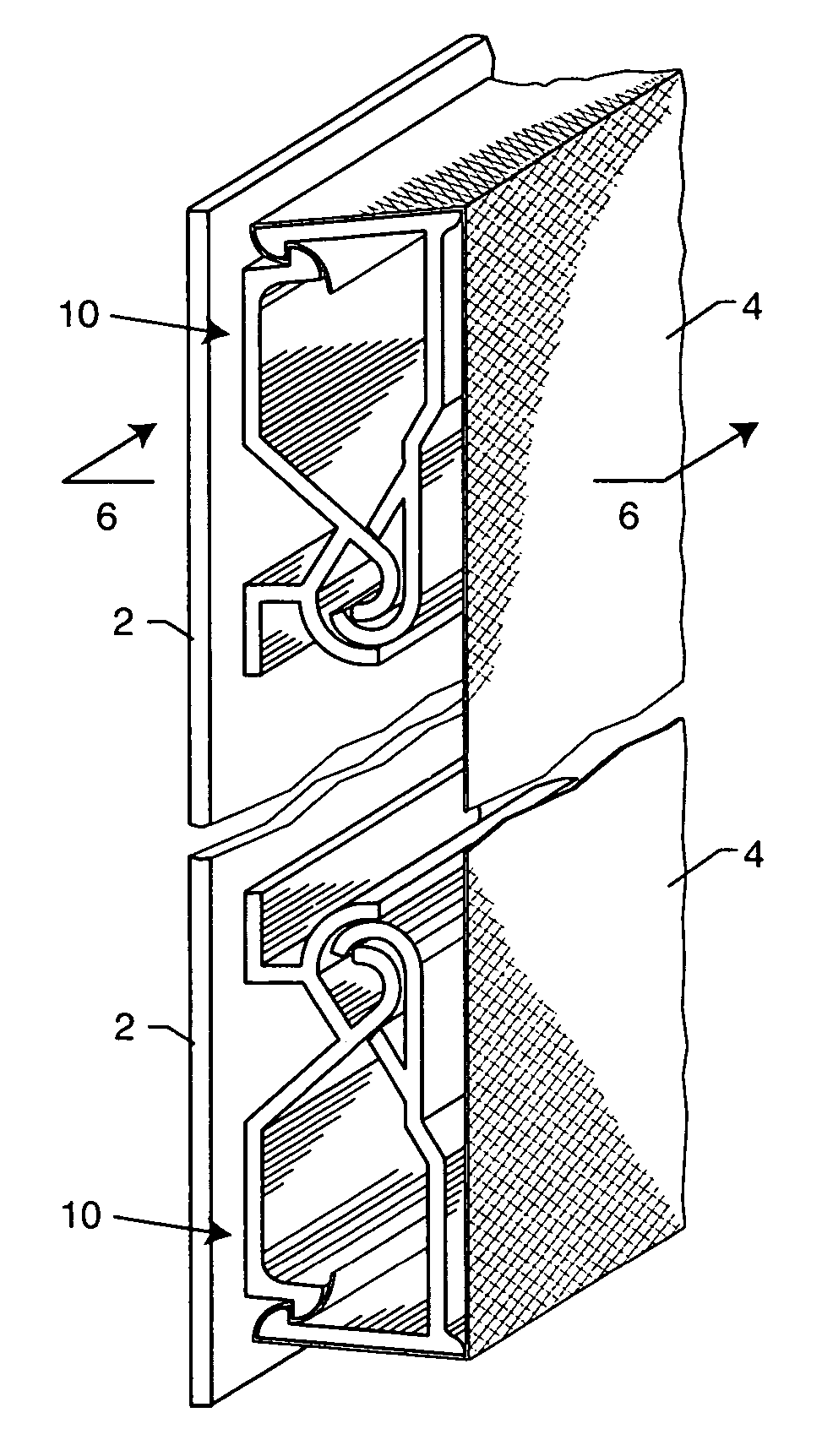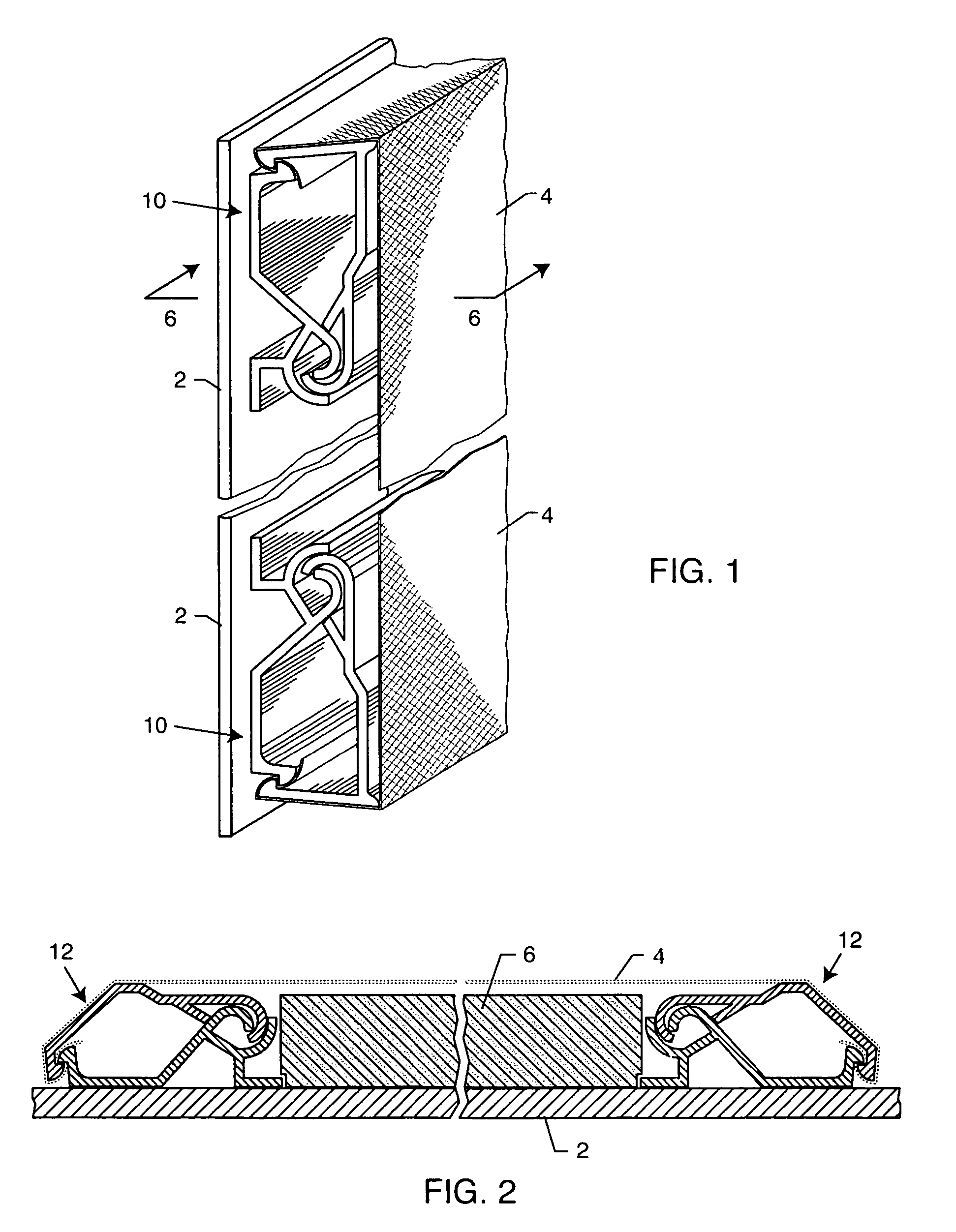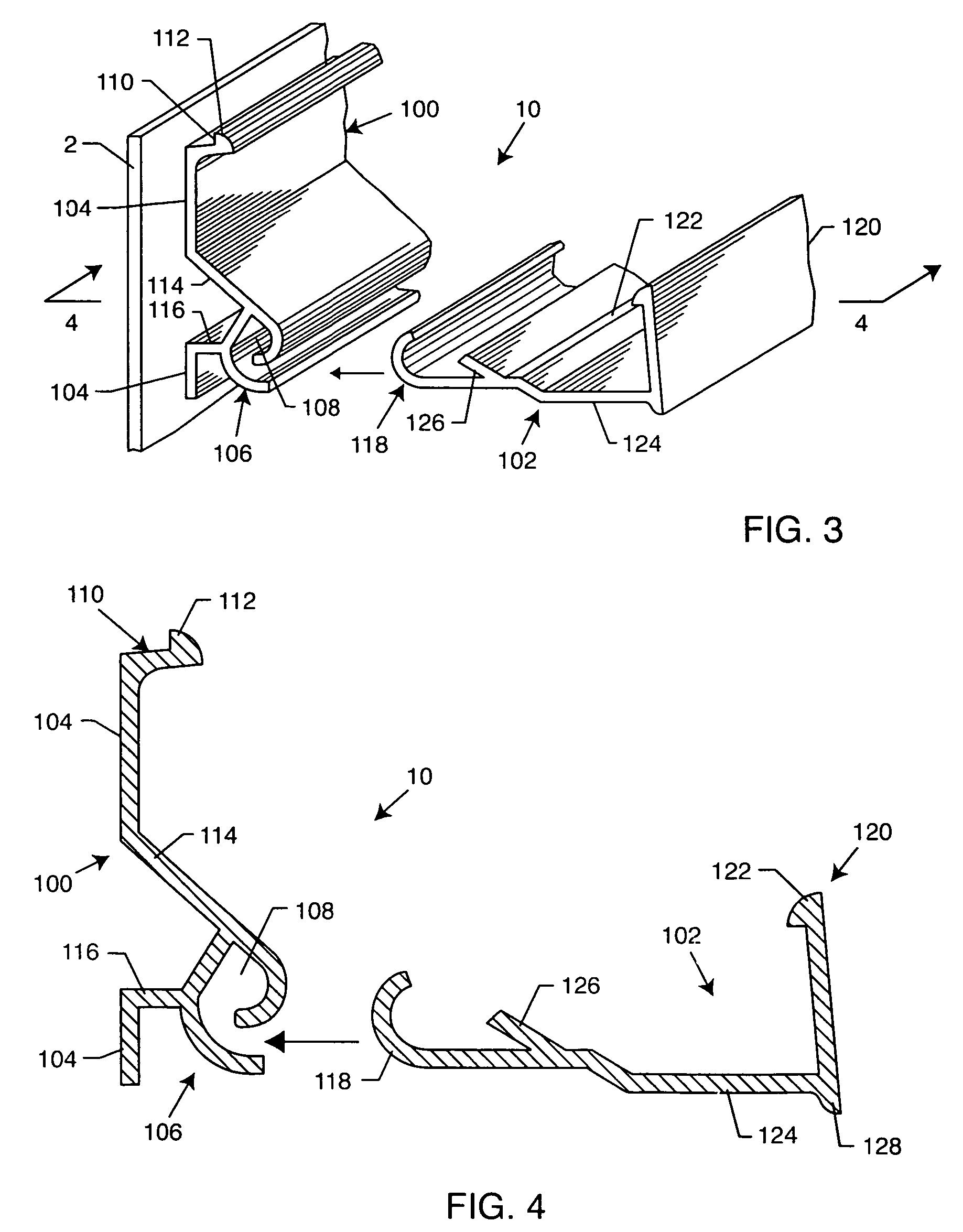Track assembly for supporting fabrics
a technology of supporting fabrics and tracks, applied in draperies, doors/windows, ceilings, etc., can solve the problems of difficult closing and locking difficult closing of the upper track member, and difficulty in ensuring the fabric is placed. , to achieve the effect of preventing shadowing effects and facilitating fabric placemen
- Summary
- Abstract
- Description
- Claims
- Application Information
AI Technical Summary
Benefits of technology
Problems solved by technology
Method used
Image
Examples
Embodiment Construction
[0036]As shown in the accompanying drawings for purposes of illustration, the present invention resides in a track assembly for covering walls with a fabric or the like. As discussed above, very tight tensioning of fabric panels can impose very high loads on the relatively light-weight hinge and track assembly structures. The spans of fabrics to be stretched can exceed thirty by twenty-five feet, and the fabric panels alone can weigh fifty pounds or more. In the prior art, there was a continuing concern that the fabric could become dislodged from the track assembly due to the tension exerted thereon by the stretched fabrics. Certain track assemblies, particularly those of approximately one-inch thickness, having a generally rectangular closed configuration, could be deformed and moved into a generally parallelogram shape due to the high tension forces of the stretched fabric. As will be more fully described herein, the track assembly of the present invention discloses a design incor...
PUM
 Login to View More
Login to View More Abstract
Description
Claims
Application Information
 Login to View More
Login to View More - R&D
- Intellectual Property
- Life Sciences
- Materials
- Tech Scout
- Unparalleled Data Quality
- Higher Quality Content
- 60% Fewer Hallucinations
Browse by: Latest US Patents, China's latest patents, Technical Efficacy Thesaurus, Application Domain, Technology Topic, Popular Technical Reports.
© 2025 PatSnap. All rights reserved.Legal|Privacy policy|Modern Slavery Act Transparency Statement|Sitemap|About US| Contact US: help@patsnap.com



